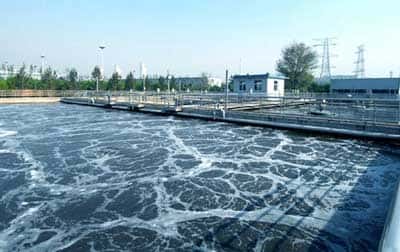Water Treatment Chemicals Ultimate Guide 2019

People in the field of environmentally friendly water treatment know how important water treatment chemicals are. We can use it to achieve indicators that are not available in the biological processing sector. Water treatment chemicals can be called a magic weapon for our sewage treatment engineers.
1. The application field of water treatment chemical
Applications of water treatment chemicals include industrial water, municipal/drinking water treatment, sewage, and wastewater treatment, and desalination. In the industrial water field, it is mainly used in industrial circulating water treatment and industrial boiler water treatment.
Common methods for industrial boiler water treatment are water treatment outside the pot and water treatment inside the pot. The chemicals used mainly include corrosion and scale inhibitors, oxygen scavengers, water supply, and alkalinizers, ion exchangers, regenerants, softeners, alkalinity regulators, detergents, and the like.
The water treatment chemicals involved in municipal/drinking water treatment generally include bactericidal algaecides, flocculants, corrosion inhibitors, and the like. Water treatment chemicals involved in sewage treatment generally include flocculants, sludge dehydrating agents, defoaming agents, chelating agents, decolorizing agents, and the like.
Mainstream technologies for seawater desalination include distillation and membrane processes.
The membrane is easily clogged during use. So it is necessary to add a scale inhibitor, a detergent, a flocculant, a scale inhibitor and a dispersant to the water. The distillation method is easy to produce scale and reduce evaporation efficiency. The water can be softened by adding polyphosphate, organic phosphoric acid, phosphinopolycarboxylic acid or the like to the raw water. The chelation of calcium, magnesium ions and other metal ions makes it difficult to precipitate and prevent the formation of scale.
2. Type of water treatment chemicals
The water treatment chemicals include the flocculating agent, corrosion inhibitor, scale inhibitor, biocide, detergent, pre-filming agent, the antifoaming agent, decolorizing agent, chelating agent, oxygen scavenger, and an ion exchange resin.
2.1 Flocculant
Just remember three things. The first point is that flocculants are mainly used to strengthen solid-liquid separation in the field of sewage treatment. The second point is that a coagulant can be added to enhance the flocculation effect. The third point is that flocculant is the cheapest and most efficient method of phosphorus removal.
2.2 Coagulant
Just remember two things. The first point is that the role of the coagulant is to adjust or improve the coagulation conditions; the second is that it can increase the grain size, density, and firmness of the flower.
3. Corrosion and scale inhibitor
Corrosion and scale inhibitors, as the name implies, are a kind of water treatment agent for relieving scale and corrosion of circulating water equipment such as boilers. The medicament is composed of an alkaline substance and an organic compound. A corrosion inhibitor is added to prevent the heated surface from being corroded.
The alkaline substance in the medicament passes through a chemical reaction in the boiler. It reacts with calcium and magnesium salts in water to form water slag. After sedimentation, it is discharged to the outside of the boiler through the sewage function. The corrosion and scale inhibitor can reduce the concentration of calcium and magnesium ions in the water so that no scale is formed in the boiler.
4. Detergent
The cleaning agent is a volatile solvent that dissolves the permeate. It is used to remove excess permeate from the surface of the workpiece being inspected. Some cleaning agents are specifically designed to remove metal hydroxides, calcium carbonate and other similar scales attached to the surface of polyamide and film component membranes. Check the wash tank, piping and security filters, and install new filter cartridges before using the cleaner.
5. Fungicide
The bactericide is mainly an agent that eliminates harmful bacteria such as bacteria and microorganisms. Internationally, it is usually used as a general term for the treatment of various pathogenic microorganisms.
3. To choose the type of water treatment chemical according to the situation
There are many types of water treatment chemicals, and we have to choose according to the situation.
At present, the types of water treatment chemicals mainly include corrosion inhibitors, scale inhibitors, biocides, and flocculants. Among them, corrosion inhibitors and scale inhibitors are close to the international advanced level in the field of variety development.
The formulation of the water stabilizer for industrial circulating cooling water is mainly phosphorus, accounting for 52~58%, molybdenum formula accounting for 20%, silicon system formula accounting for 5%~8%, and tungsten system formula accounting for 5%. Other formulas account for 5% to 10%.
The concept of green chemistry is re-evaluating the role and performance of existing water treatment chemicals. For products that are already well known for these functions, biodegradability is the most important indicator of evaluation.
There are many types of water treatment chemicals.
There are still some differences in the field of application of different types of pharmaceuticals. The concept of green chemistry is entering the field of vision of more and more people. Therefore, we will have higher requirements for these products from now on. This will enable our water treatment chemicals to develop better.
The development and changes of water treatment chemicals are still very obvious. We cannot ignore the development of this product because it will bring you many incredible changes.
Source:
https://www.irohedp.com/water-treatment-chemicals-ultimate-guide-2019